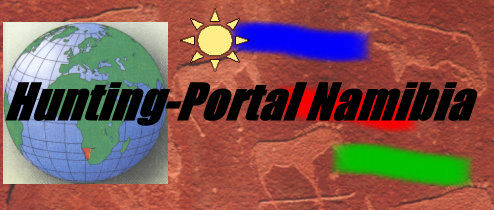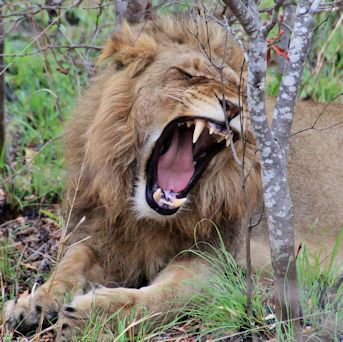After the tiger, the lion is the second largest cat, making it the largest land predator in Africa.
Lions have a short, sand-colored or yellowish to dark ochre colored coat. The underside and the inside of the legs are always lighter. Males also have a long mane, which is usually dark brown, but can also be black, light brown or reddish brown. This mane spreads from the cheeks to over the shoulders, less often over the abdomen and chest. The shape and color of the mane varies not only between individuals, but also in the same individual throughout life, depending on the physical condition. Especially long and dark manes are a sign of good condition and fighting power, as the hormonal status and nutritional status have an effect on the density and length of the mane.
Lions have highly developed social behavior within a pride. A pride usually consists of three to six lionesses, two male lions and several puppies and adolescents. Sometimes the male lions separate from the pride to roam alone for some time, so that one often encounters lionesses without male accompaniment.
The lion's prey consists largely of large ungulates, such as zebras, wildebeests, etc. Lions are by no means exclusively nocturnal. Especially when they are hungry, they go in search of prey in the late afternoon.
In Namibia, lions can be hunted on the farms bordering the Etosha National Park as well as in the northern safari areas. Areas with good occurrence are those adjacent to the Khaudum National Park. If the farm area north of Kamanjab is quite often alternated by lions.
Stalking a lion out is far less difficult than you might imagine. You can locate the lion by the nocturnal roar, pick up the track at a waterhole or at a crack. Searching for game changes or paths is also promising, because the lions prefer to use such easy-to-walk changes.
A large-caliber weapon of at least 9 mm should be chosen. For this purpose, hard partial jacket projectiles should be used to ensure good penetration, even at unfavorable firing angles. In general, so-called "Lion Load" projectiles should be treated with caution. The soft projectiles do not have enough depth effect, especially with "pointed" shots. Especially in the case of lions determined to attack, no shock effect is achieved if there is no hit from the brain or spine. In the case of frontal attacking lions, the head usually covers the target on the chest or leaf. If the brain is missed and only the jaw, nose or cheekbone is hit, it is necessary for the bullet to penetrate the head and penetrate into the chamber. The Lion Load projectiles, which are recommended as "stoppers", are therefore certainly not without controversy.


